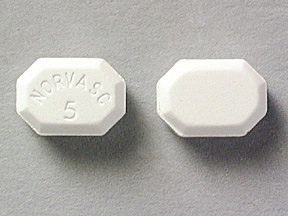Amlodipine besylate is the generic name for the brand Norvasc, and its primary function is to lower the blood pressure. It does this when it relaxes the muscles in the arterial system and decreases overall peripheral resistance; this, in turn, reduces blood pressure levels. Like most cardiovascular system medication, the brand name of this calcium channel blocker (CCB) will have a Norvasc price, meaning, it wouldn’t come cheap.
Used in coronary heart disease such as angina (chest pain) and hypertension management, Amlodipine is included in the List of Essential Medicines of the World Health Organization (WHO), a list of crucial medications required by a fundamental health system. It was approved by the U.S. Food and Drug Administration (FDA) in July of 1992.
How Amlodipine Works
A member of the class of CCBs as mentioned earlier, amlodipine blocks calcium transport into the smooth muscles of the cells which line the heart’s arteries (called coronary arteries). Calcium action is important in order for muscles to contract, hence, blocking calcium transport relaxes dilates or expands the coronary arteries by relaxing their arterial muscles.
This dilation increases blood flow to prevent angina or chest pain that usually results from a reduction in blood flow; this reduction is caused by contraction or spasm of the coronary arteries. When the arterial muscles are relaxed, blood pressure is lowered, reducing the heart’s workload of pumping blood throughout the whole body. It also reduces the need for oxygen by the heart muscles.
Short-Term Side Effects
Amlodipine’s side effects are considered mild in general and don’t last very long. The most common are swelling (known as edema) of the body’s lower extremities such as hands, ankles, legs and feet and headaches. Dizziness, joint pain, fatigue, drowsiness, wheezing, palpitations, flushing, muscle pain, and nausea may also be experienced when taking Amlodipine. Although these side effects are not serious medical conditions, they usually interfere with the individual’s daily functions.
Long-Term Side Effects
 Prolonged use of amlodipine may cause long term side effects such as inflammation, rashes, swelling, reddening, and itching of the skin. It can also cause an increase in sweating and dryness of the mouth and skin.
Prolonged use of amlodipine may cause long term side effects such as inflammation, rashes, swelling, reddening, and itching of the skin. It can also cause an increase in sweating and dryness of the mouth and skin.
In relaxing the heart muscles as well as those of the blood vessels’ amlodipine may also affect peripheral muscles such as those found between the esophagus (esophageal sphincter) and the stomach. When this happens, muscles are loosened and cause stomach acids are regurgitated to the esophagus.
This may result in heartburn, ulcers, and dyspepsia according to the National Institute of Diabetes and Digestive and Kidney Diseases. Although rare, depression, insomnia, sexual dysfunction, nervousness, and anxiety may also be possible long term side effects as well as pancreatitis, diarrhea, passing gas, and constipation.
Drug Interaction
These are only some of the medications that can have an interaction with Amlodipine; it’s up to you to speak to your physician about whether or not you should stop taking all or any of these if taking Amlodipine as well (you will also have to take the Norvasc price into consideration before making a decision):
· Antifungal medication such as flucanazole, ketoconazole, and itraconazole
· Benzodiazepines such as lorazepam, clonazepam, and diazepam
· Warfarin
· Rifampin
· Imipramine
· Cabamazepine
· Simvastatin
· Protease inhibitors such as ritonavir, atazanavir, and indinavir
Generic Alternatives
If you would like generic alternatives to amlodipine with a similar Norvasc price, consult your doctor about the following CCBs:
Felodipine such as Plendil®
Nifedipine such as Procardia®
Amlodipine and/or Benazepril such as Lotrel®
Verapamil such as Calan®, Verelan® and Covera®
Share This